This Easy Homemade Bagels recipe is not complicated at all, and it makes delicious and chewy, dairy-free bagels that you can have anytime!
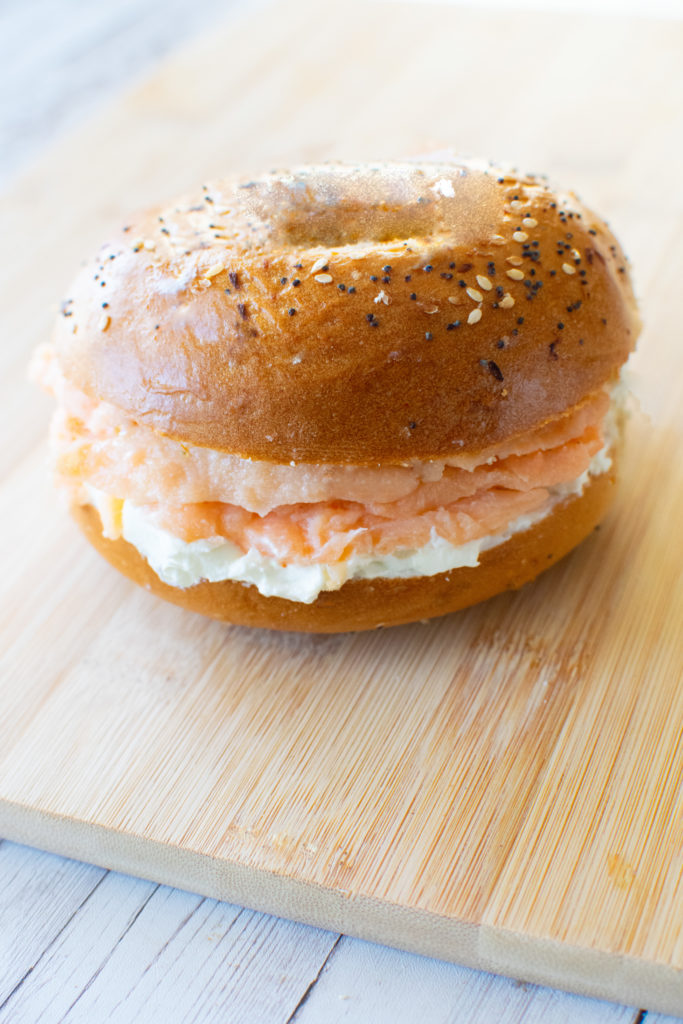
Bagels are terrific. They are dairy-free and you can eat them by themselves or as a sandwich with anything from tuna to egg salad to lox to hamburgers! But REALLY GOOD bagels can’t be found in a grocery store. You have to go to a bagel shop or maybe a deli. And maybe you don’t live near either of those.
No worries! With this Easy Homemade Bagels recipe will allow you to make them right in your own home with basic ingredients that you CAN find in any grocery store!
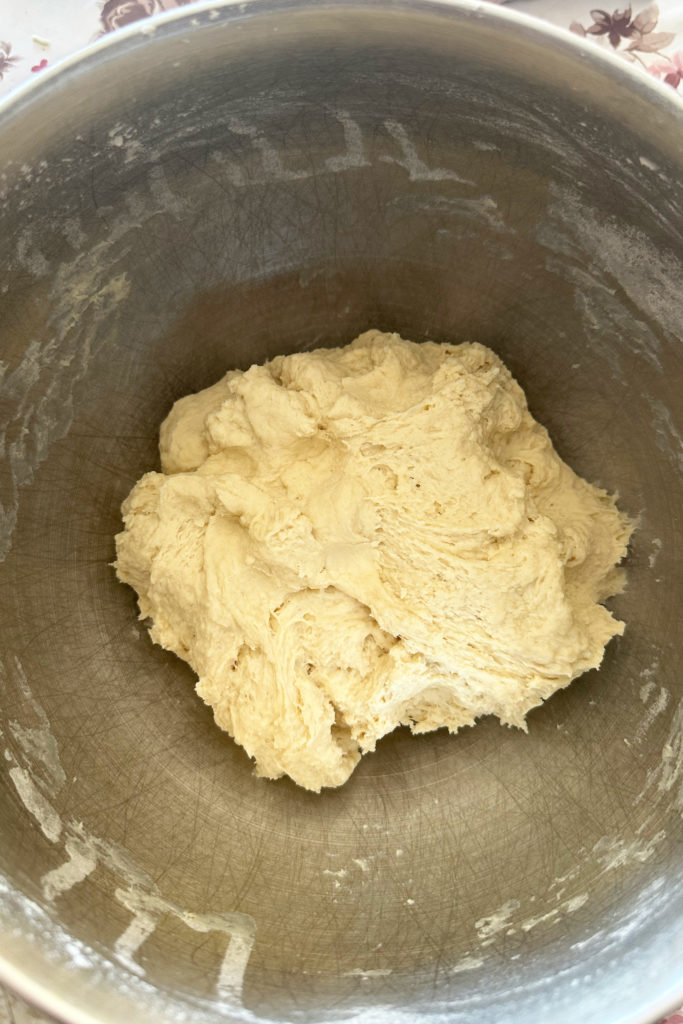
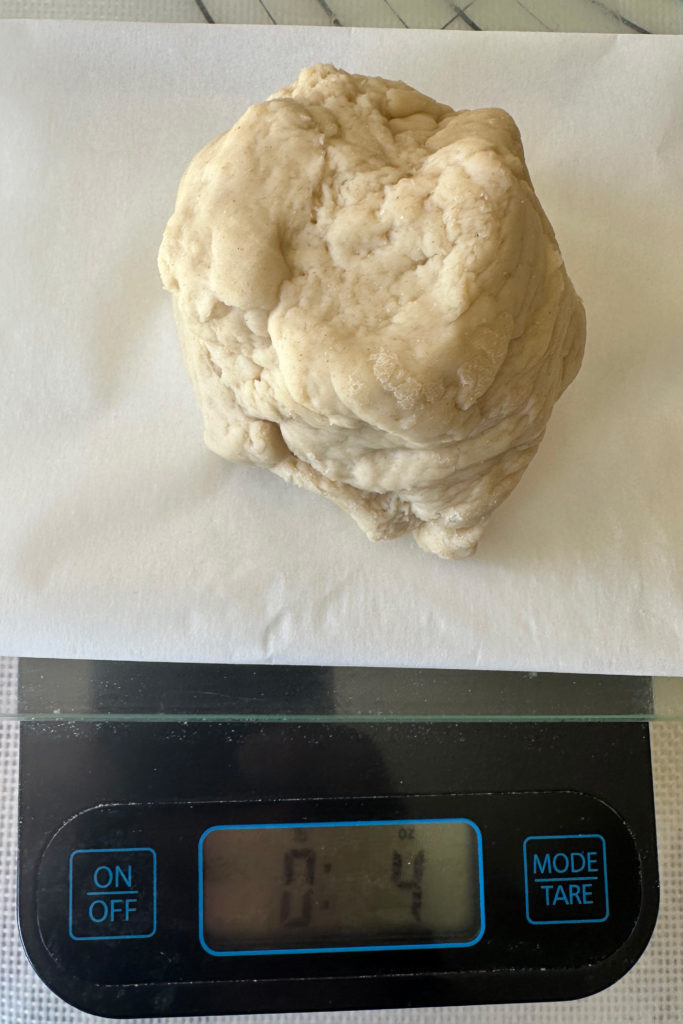
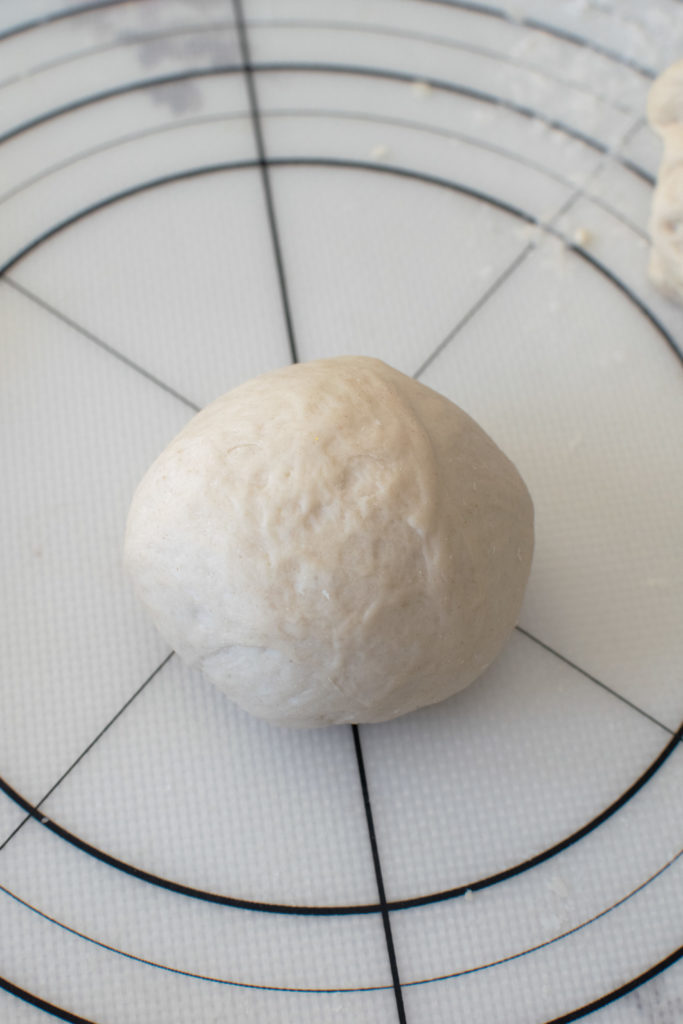
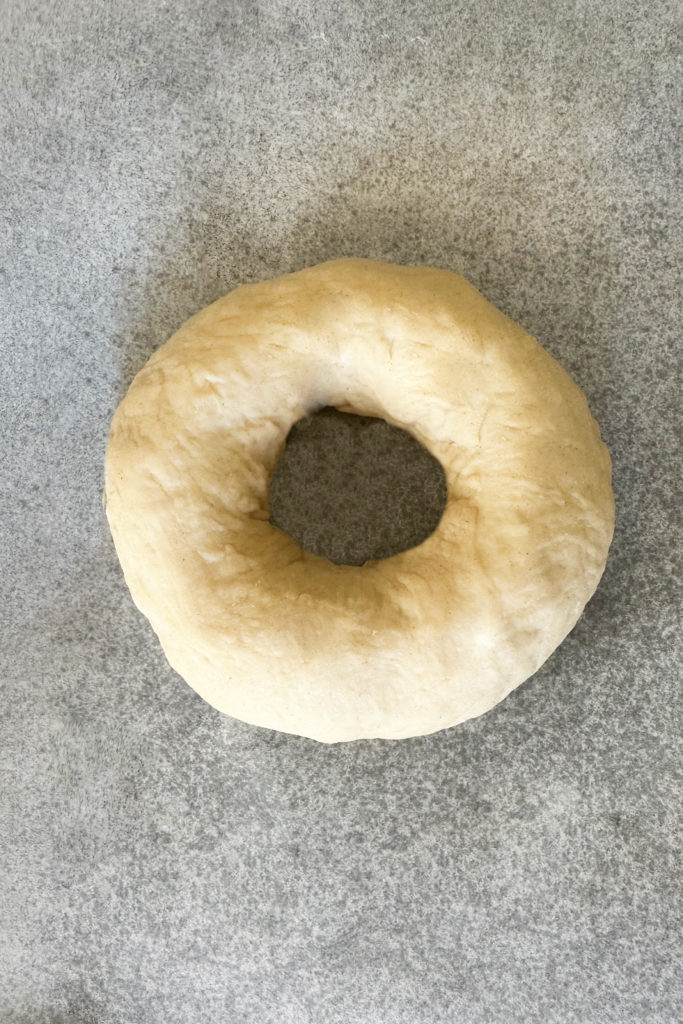
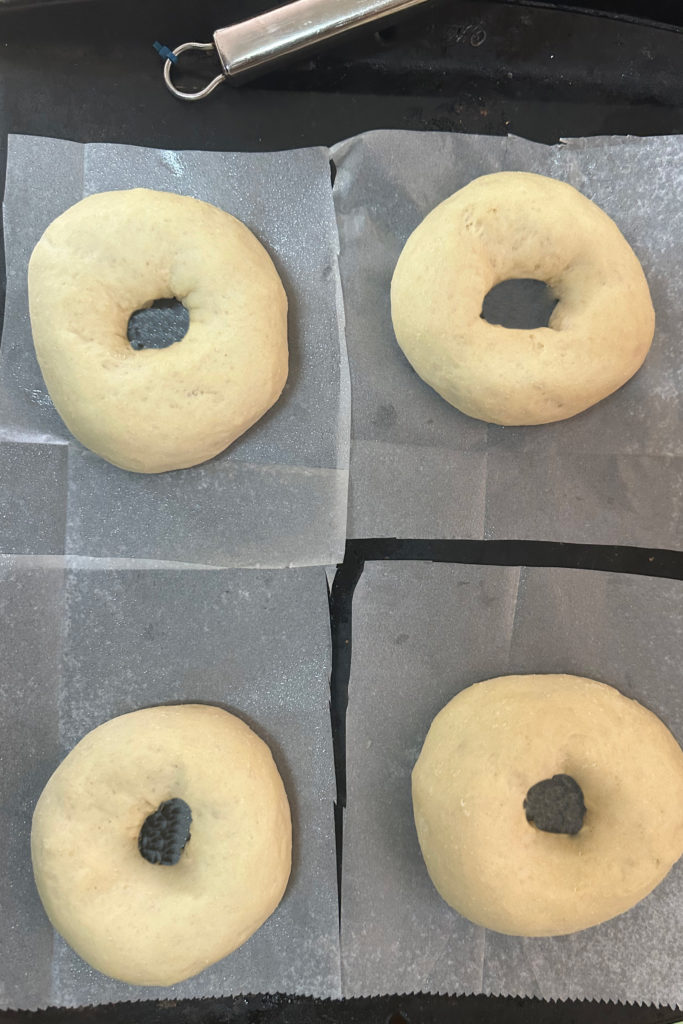
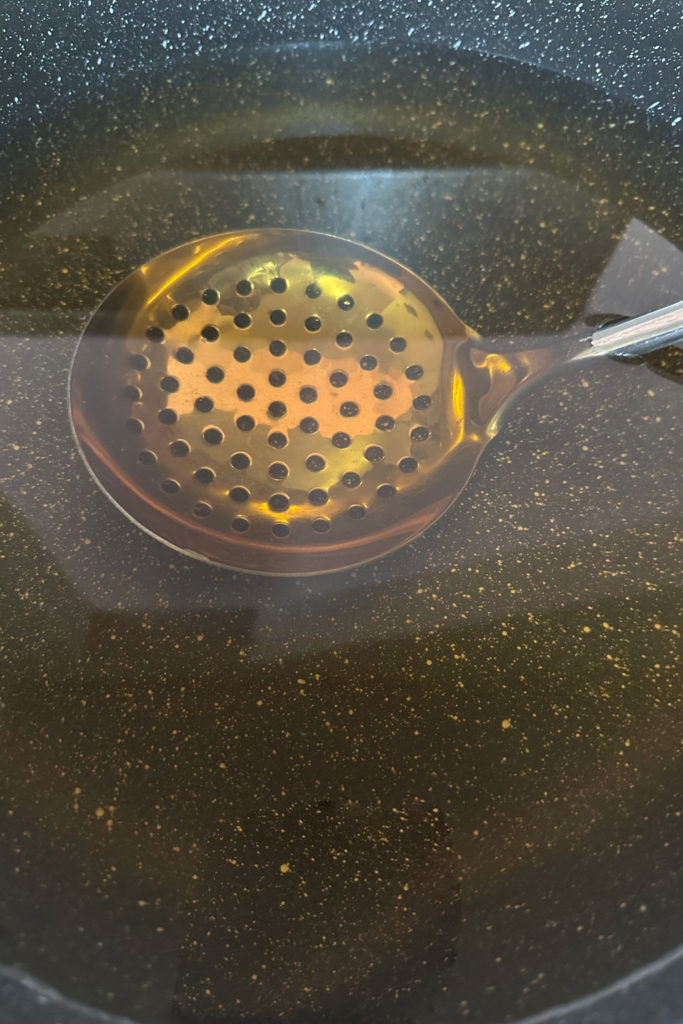
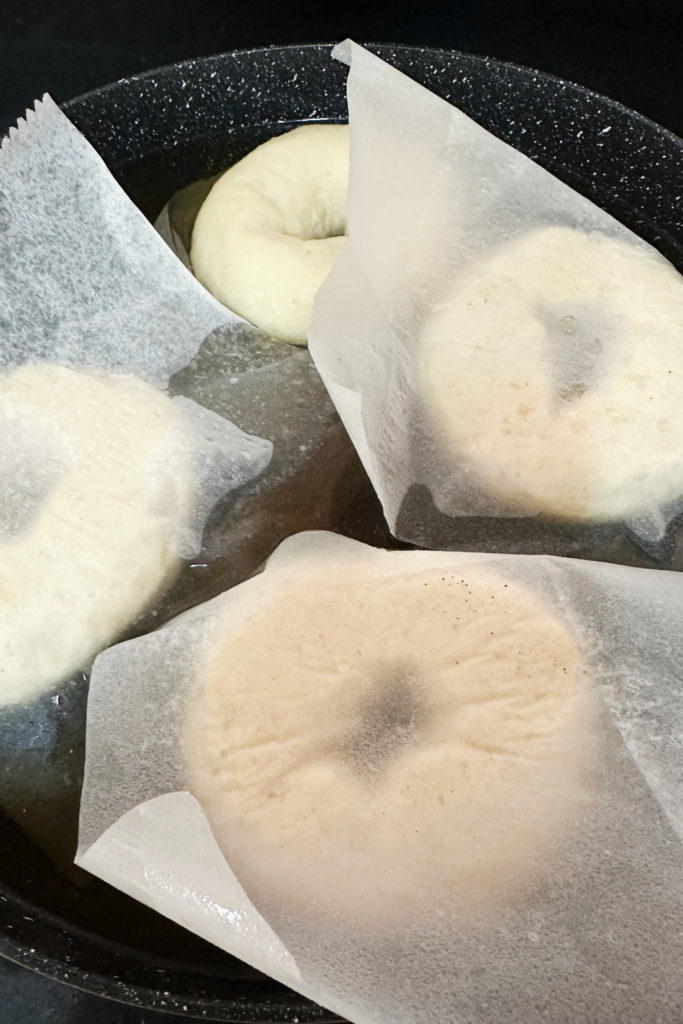
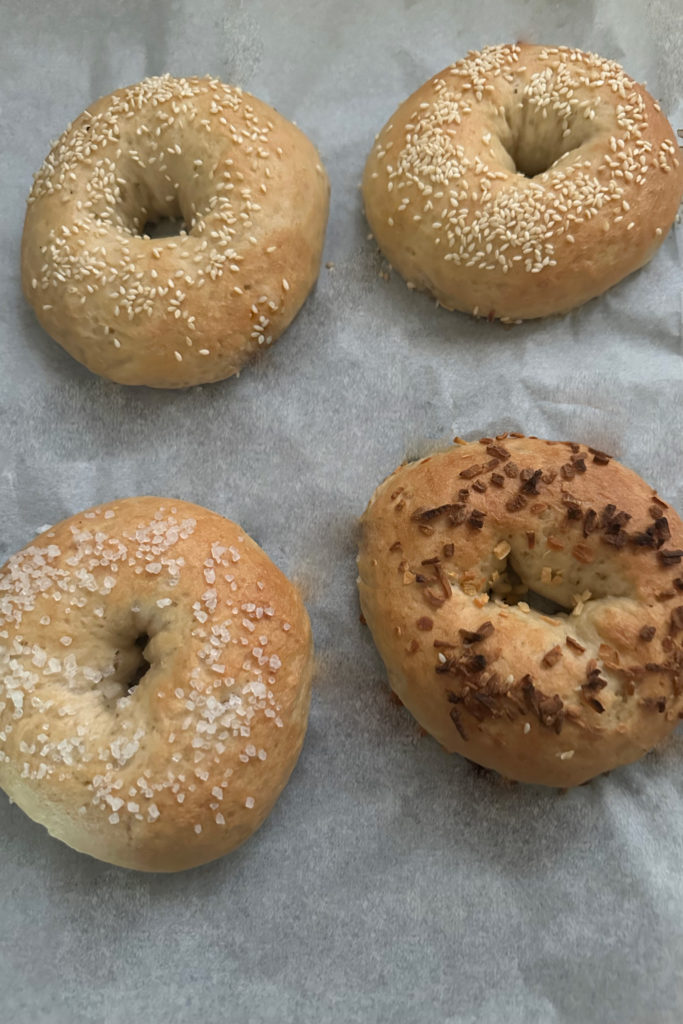
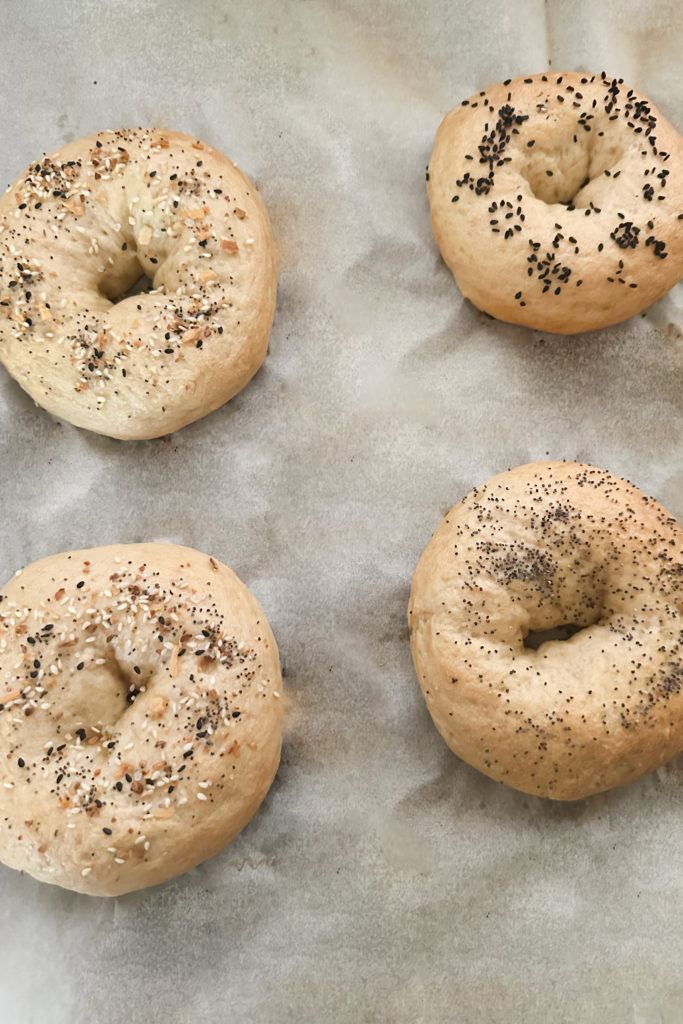
A little bit about bagels
Bagels are dense bread rings. They are made from dough that has been slightly boiled and then baked. Bagels are chewy for the most part, but the outside is often crispy when they are fresh out of the oven. They are often topped with extras such as sesame or poppy seed, large grain salt (kosher salt), or a mixture of toppings resulting in the “everything” bagel.
Sometime in the fifteen hundreds, the bagel became a part of Polish cuisine and were later brought to the United States by Polish Jewish immigrants.
Now, bagels can be found pretty much everywhere!
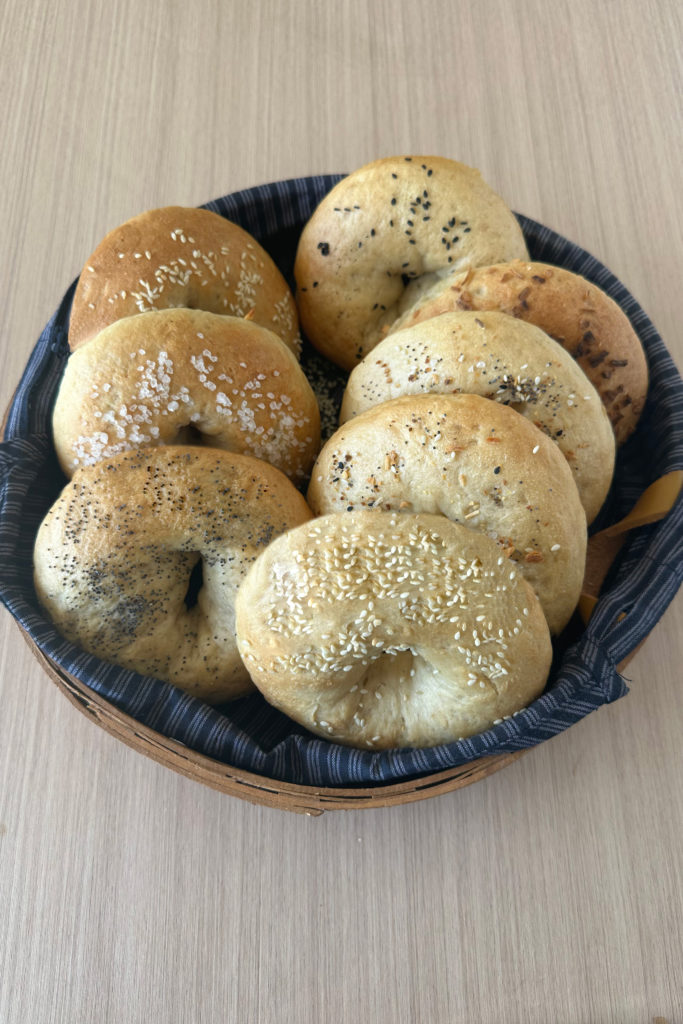
Would you like to make homemade lox too? Try Homemade Lox!
If I can bake, anyone can
I am the type of person who, when she sees something that looks easy to create, will try to do just that. It doesn’t really matter what it is.
And if I don’t at first succeed, I will continue to try and try until I complete the project or until I decide that I have at least given it my best effort and have had enough.
For example, when my eldest son (I have 5) sent me a video of an apartment he was thinking of renting, I saw a painting on a wall. The canvas was completely covered with uneven clouds of various colors and a long line of white squiggled randomly over it. My first thought was why something so simple could actually be considered a work of art, and my second thought was, Hey, I totally can paint something like that, and I did (MUCH smaller, of course).
But then there was the picture with crayon drippings in various beautiful colors (I am a sucker for colors). I had a bunch of old crayons, and I tried it. However, when I heated them to melt, the colors kept dripping across one another, and I couldn’t get them to drip straight down in their own paths. The repeated attempts didn’t pan out too well, and not only did I get crayon drippings on the canvas, I got them all over the kitchen. So, THAT was one of those times where I agreed with myself to give up.
And there have been so many other projects (people like me are a thing—we will spend $80 to craft something that would cost $5.99 to buy in the store).
Anyway, so, one day after a visit to a bakery one day, I decided that I should totally try baking (I could already cook).
I started with chocolate chip cookies. While chocolate chip cookies aren’t hard to make, and they always come out tasting good (unless I forget to take them out of the oven on time and they burn), I found it a challenge to get them to come out the way I had envisioned.
Sometimes they came out too cakey, sometimes too dry, sometimes too flat, and sometimes they spread out into one another.
But every so often, they would even come out just right. And it was those times—and the fact that my kids loved them no matter how they came out—that gave me encouragement to try again. And again. And again.
My next attempt at baking was birthday cakes. I am not sure why I decided to do this since the boxed kind are perfectly fine, but whatever.
I started with a 9″x13″ pan, and those sheet cakes came out fine, but they weren’t “real” birthday cakes. You know, like a round one. With layers.
So, I baked a cake with layers.
As with the sheet cakes, it came out tasting terrific, but the layers weren’t flat and the cake came out lopsided. Like with other things, I tried over and over (we have a lot of birthdays), but the layers always came out unlevel. I solved the problem by filling out the valleys with frosting.
I knew that when this happens, the layers need to be leveled off by cutting away the excess, but that would’ve meant removing too much, and I would’ve ended up with a very short cake, so I wouldn’t do it.
Luckily, I did find out that there is a way to prevent uneven layers, which is by using baking strips. Simple as that.
I did learn a very valuable lesson while I was still struggling with the lopsidedness of my cakes, and that was NEVER to put frosting on the cake until the layers have completely cooled because if the layers are still hot, or even warm, the frosting will get runny. Not only will this prevent a nicely decorated cake, but if it is not level, everything you put on top of the cake will…slide…right…off. Seriously.
Actually, I learned another lesson as well. If you have unevenness in your layers, just cut the higher portion of the cake (the part that you would cut off to make it level) horizontally down the middle and flip the top part of that over on to the lower part of the layer, it will mostly level it off. THEN you can spread on the frosting and decorate without losing height.
Talking about height, with the issue of the uneven cake layers solved, the next thing I wanted to improve was the height of my cakes. For some reason, I didn’t think that the layered cakes that were higher were probably three-layer cakes. I just thought that my two-layer cake should be higher. So, I did what any person who didn’t bother to do ANY research would do. I doubled the recipe.
Just like before, the cake came out tasting good, but it was no longer moist and fluffy. In fact, it was kind of heavy.
I am pretty sure now that my issues with baking were because of the way that I cook because I am the type who can eyeball some of the ingredients, and the food still comes out good.
That is NOT so with baking. At least not with me.
Anyway, so back to my heavy cake.
I couldn’t figure out what was wrong, and I complained to my daughter, Elissa, about how my cake wasn’t coming out like it used to, and her first question was the obvious.
“Mom, did you follow the instructions?”
I told her, “Yes, I followed the directions. But look at it!”
Elissa insisted that I must’ve done SOMETHING wrong and decided that she would make the same cake (she always follows directions) and see how HERS came out. So, I read the instructions to her while she made the batter.
When Elissa’s cake came out just as heavy as mine, she almost cried, but I felt kind of gratified that whatever was wrong wasn’t MY fault. Ha!
Then she asked to see the recipe for herself so she could see what could possibly have gone wrong, and she was surprised.
“These are half of the quantities that you read to me. You doubled the recipe. Why??”
I told her that I wanted a higher cake.
“That is NOT considered following directions. The recipe is for two pans, and you put double in each pan, so it couldn’t rise.”
Oh.
I took back my “ha” and never did THAT again.
So, I learned that I need to follow instructions better when baking. Fine.
One day, while I was in the kitchen baking something and, yes, following instructions, Elissa walked in.
“Mom. You are NOT really measuring oil in the palm of your hand, are you?!”
I told her I was in a rush and didn’t want to take the time to look for the measuring spoons in the baking drawer, it was only a tablespoon, and I certainly know what a tablespoon of oil should look like, even in my hand. At least I wasn’t trying to measure a cup.
Sheesh.
Then, there was the time that I made muffins.
They were on the counter, so my son asked my daughter if he could have one. She told him, You can TRY. (He did, but he couldn’t bite down, and I STILL have no idea what I did wrong.)
Sometimes, when someone is very familiar with a recipe, they might be able to make little adaptations to some of the ingredients, but overall, it’s a good idea to remember to follow instructions and measure properly when you are making cakes or cookies or whatever it is you are trying to bake.
Or you could end up like I did. 🙂
Baking and Dessert Pantry Essentials
I never know when someone in my family is going to want a dessert at home, to bring to a friend’s house, or need for an event, so I like to make sure I can bake anything with very short notice. To that end, I keep a variety of supplies and ingredients in the house that will allow me to do just that.
I can’t tell you how many times I was glad to have whatever I needed within reach for the last-minute visitor or for when one of my kids went to a friend or had a school event without much prior notice.
I have slowly collected things over the years as I needed them (or if I found a good sale) and like to keep more than one of the smaller items in case I don’t want to wash dishes in the middle of baking.
My basic “equipment” includes:
- a stand mixer, which I use mostly for dough and sometimes for whipping
- a hand mixer (for things that aren’t dough and I don’t want to mix manually)
- a kitchen scale
- different sizes and shapes of baking pans, including loaf pans
- mixing bowls (or just large bowls—I have plastic, glass, and metal)
- cookie sheets
- pie dishes
- dry measuring cups
- liquid measuring cups
- measuring spoons
- whisks
- rubber spatulas (really good for when you don’t want to leave anything in the bowl)
- rolling pins
- a baking mat for rolling out dough
- baking strips
- a good supply of baking (or parchment) paper (also round for layer cakes)
I can certainly get by without a lot of the above, but it makes baking so much simpler when I just have whatever I need at my fingertips.
Note: The measuring cups and spoons should match as far as the measurements are concerned. Not all cups are properly marked, and this can throw your measurements off.
In addition to the equipment, there are the baking ingredients that I try to keep in the house at all times:
- flour
- white granulated sugar
- brown sugar (light/dark—I usually keep dark)
- confectioners’ sugar (powdered sugar)
- salt
- baking powder
- baking soda
- cocoa powder
- ground cinnamon
- ground nutmeg
- ground ginger
- ground cloves
- baking chocolate
- chocolate chips
- instant dry yeast
- vanilla and/or vanilla sugar
- cooking oil/cooking spray
- margarine or butter
- eggs
- honey
- instant coffee
- various extracts (real or imitation)
I also make sure that I have the following on hand to be able to make a variety of fillings, frostings, and toppings:
- whipping cream
- powdered pudding mix
- powdered sugar
- a good chocolate spread
Then, there is the following to make last-minute quick desserts:
- packaged pie dough or ready-made pie crusts
- puff pastry dough
Lastly, it’s not a bad idea to keep fun toppings, such as chopped walnuts, raisins, and the oh-so-important container of sprinkles.
Easy Homemade Bagels
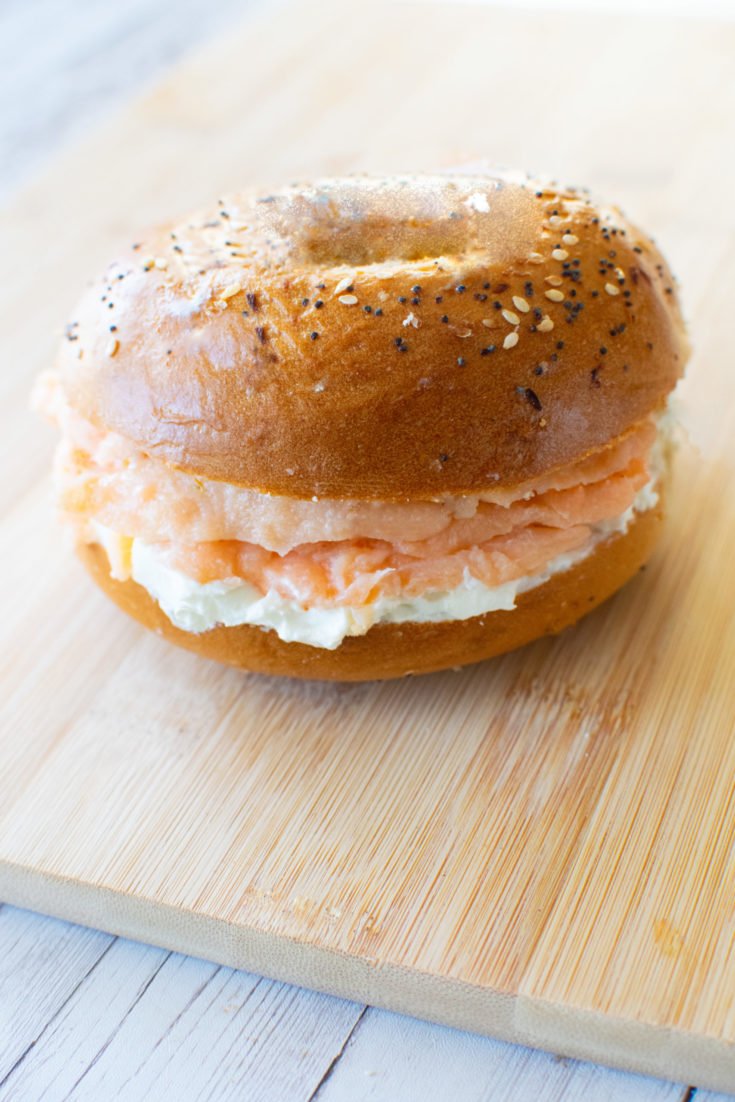
Delicious and chewy, dairy-free bagels.
Ingredients
For the dough:
- 4 cups bread flour or all-purpose flour, sifted
- 1/2 tablespoon dry yeast
- 1/2 tablespoon salt
- 2 tablespoons of oil
- 1 tablespoon honey or sugar.
- 1 1/8 cups of warm water (1 cup + 2 tablespoons)
For the boiling:
- 2 tablespoons brown sugar (or barley malt syrup, if desired)
- 1 tablespoon baking soda
- 1/2 tablespoon salt
For the topping (if desired)
- 1 egg yolk
Topping suggestions
- Sesame seeds
- Poppy seeds
- Kosher salt
- Dried onion flakes
- Dried garlic
- Or other topping of choice.
Instructions
Preparing the raw bagels:
- Lightly mix the flour, yeast, and salt in a mixing bowl.*
- Mix in oil and honey.
- Slowly add the water while mixing.
- Mix until the dough is soft but not sticky (a little is ok), kind of like Play-Doh (maybe around 5 minutes).
- Cover the mixing bowl with the dough and let rise until it has approximately doubled in size (or you can move to another bowl that has been lightly greased with oil). **
- After the dough has risen, remove from the bowl and divide into 8 equal pieces (you can eyeball it or weigh them).
- Shape each piece into a bagel. One way to do this is to roll a piece of dough into a ball and, using your thumb, make a whole in the middle of the ball and stretch it until the ball becomes the shape of a bagel (the hole should be wider than a baked bagel, because it will eventually become smaller), lightly oil the raw bagel, and place on a sheet of baking paper on a cookie sheet or tray. Repeat with the other pieces of dough.***
- Cover the tray of raw bagels with a piece of plastic wrap and let sit to rise for around an hour (they should become a bit poofy and, again, the time will depend on the warmth of the room), or you can leave them in the fridge overnight.
Cooking/baking the bagels:
- Heat the oven to 400°F.
- Fill a wide, medium-sized pot approximately 2/3 full with water (approximately 2 quarts or so) and bring to a boil. Then, lower the heat to medium-high.
- Mix in the baking soda, salt, and brown sugar or barley malt syrup.
- If you haven't already done so (from the notes), cut the baking paper around the raw bagel (leaving at least an inch of paper so you can lift it up with your hand). Then, take a bagel with the paper and place it upside down in the water (you should be able to comfortably fit 3 or 4 bagels in the pot—do not overcrowd).
- Cook bagels on one side for around one minute, and then carefully flip over and cook on the other side for one minute. If you want bagels that are chewier, then cook each side for two minutes. (The baking paper will come off on it's own, or at least you will be able to easily remove it.) Then, carefully remove the bagels from the water and place on a cookie sheet or baking pan with a sheet of baking paper that has been lightly coated with oil or sprayed with cooking spray. . Repeat with the rest of the raw bagels.
- Beat the egg yolk and use it for an egg wash over the bagels by brushing it over the top of each one.
- Lift each bagel VERY carefully and dip into whichever topping(s) you want, and then place back on the baking paper.
- Place the cookie sheet or baking pan with the bagels into the oven and bake for 15-20 minutes or until they are a golden brown.
- Remove from oven and let cool (preferably on a cooling rack).
Notes
* Do not use old yeast or it will not rise.
** The time this takes will depend on the temperature of the room. The warmer the room the quicker the dough will rise. In the summer, it can take well under and hour, but in the winter you can expect at least an 1 1/2 hours unless the room is very warm.
*** You will be cutting the baking paper around the bagels into squares (or circles), so you can do this in advance if you like.